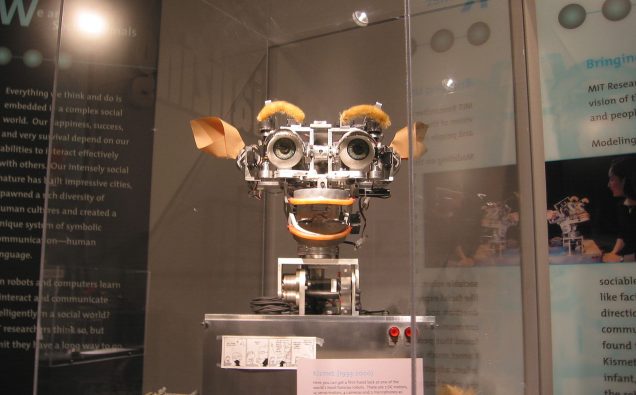
Photo: Polimerek in MIT Museum duringWikimania 2006/Wikimedia
Are we transferring our biases to computers? With supervised learning, machines learn what we teach them. Just like our kids often perpetuate our belief systems, biases, and preferences, will machine also carry forward our implicit biases?
Leading research on prejudice, the study of implicit social cognition, highlight the distinction between “controlled” and “automatic” information processing. Cognitive psychologists Shiffrin & Schneider in their seminal paper “Controlled and automatic human information processing: Perceptual learning, automatic attending, and a general theory,” significantly advanced the implicit bias theory. There has been a consensus that:
- Controlled processing is “voluntary, attention-demanding, and of limited capacity.”
- Automatic processing occurs “without attention,” has “nearly unlimited capacity,” and “hard to suppress voluntarily.”
Growing body of knowledge on implicit bias and credible studies show that awareness of stereotypes can affect social judgment and behavior in relative independence from how subjects respond to measures of their explicit attitudes. Simply put, an egalitarian, well-behaved man can display semi-sexist tendencies.
Machine learning is fundamental to artificial intelligence, or A.I. In supervised learning, computers learn like a human. AI “modeled on science’s understanding of how the human brain processes and categorizes information.”
In supervised learning, if we teach machines that name “Ibrahim” or “Mohammad” pose a higher security risk, will machine become Islamophobic?
According to the U.S. Bureau of Justice Statistics (BJS) in 2013 black males accounted for 37% of the total male prison population, white males 32%, and Hispanic males 22%. White females comprised 49% of the prison population in comparison to black females who accounted for 22% of the female population. However, the imprisonment rate for black females (113 per 100,000) was 2x the rate for white females (51 per 100,000). Out of all ethnic groups, African Americans, Puerto Rican Americans, and American Indians have some of the highest rates of incarceration. Though, of these groups, the black population is the largest, and therefore make up a large portion of those incarcerated in US prisons and jails. When I look at the following chart, I wonder, if machines are learning that “Black” and “Hispanic” pose a higher risk to the society?
| 2010. Inmates in adult facilities, by race and ethnicity. Jails, and state and federal prisons. | |||
| Race, ethnicity | % of US population | % of U.S. incarcerated population |
National incarceration rate (per 100,000 of all ages) |
| White (non-Hispanic) | 64 | 39 | 450 per 100,000 |
| Hispanic | 16 | 19 | 831 per 100,000 |
| Black | 13 | 40 | 2,306 per 100,000 |
Opinions expressed in the blogs are entirely of writers’ own and do not necessarily reflect policy of Views and News















